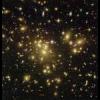Funny. The NAD 2.0 paper by Imai (2016) describes NMN as "the systemic signaling molecule" to replenish NAD+ in different tissues and this new paper by Treebak, Tramell and others (2019) instead designates NR as the systemic "transport form" of NAD+ precursors.
Semantics perhaps as NMN (what we know) needs to be converted to NR before entering the cell and NR (what we know) needs to be turned into NMN in the cytosol.
From "Mitochondrial function in liver cells is resistant to perturbations in NAD+ salvage capacity" (2019):
"NMN and NR can both be delivered orally to increase NAD + levels in peripheral tissues (7, 8, 12, 24). Interestingly, NMN appears to be converted to NR for cellular uptake, indicating that NR is the “transport form” of these NAD + precursors (29)."
http://www.jbc.org/c...6.full.pdf html
"NAD World 2.0: the importance of the inter-tissue communication mediated by NAMPT/NAD+/SIRT1 in mammalian aging and longevity control" (2016)
"...the feedback mechanism between the hypothalamus and adipose tissue predicts the importance of NMN as a systemic signaling molecule that maintains biological robustness. Given that NAD+ levels decline with age in various organs and tissues in rodents and humans,43,44,45,46,47,48 boosting NAD+ biosynthesis with NMN or nicotinamide riboside, another NAD+ intermediate that is converted to NMN, in key system-controlling organs and tissues could maintain biological robustness and delay the aging process in mammals."
https://www.nature.c...es/npjsba201618
Edited by Fredrik, 23 July 2019 - 07:59 AM.
































 This topic is locked
This topic is locked



















